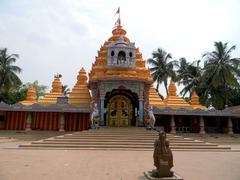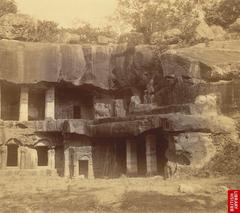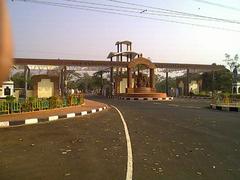Comprehensive Guide to Visiting Dibakar Marg, Bhubaneswar, India
Date: 24/07/2024
Introduction
Dibakar Marg in Bhubaneswar, India, is a captivating destination that offers a glimpse into the city’s rich past and vibrant cultural heritage. Known as the ‘Temple City,’ Bhubaneswar is home to an array of ancient temples and historical monuments, many of which are concentrated in the Ekamra Kshetra area, including Dibakar Marg. This guide aims to provide a comprehensive exploration of Dibakar Marg, detailing its historical significance, architectural marvels, cultural venues, and practical visitor information. From the intricate carvings of the Lingaraj Temple to the serene ambiance of the Ram Mandir, Dibakar Marg is a microcosm of Bhubaneswar’s architectural and cultural splendor. This guide also delves into the area’s urban planning, based on the ancient Mandala concept, and highlights ongoing preservation and conservation efforts to protect this invaluable heritage (UNESCO, World History). Whether you’re a history enthusiast, a cultural explorer, or a curious traveler, Dibakar Marg offers a unique journey through time and tradition.
Table of Contents
- Introduction
- Ancient Temples and Architectural Heritage
- Historical Monuments and Archaeological Sites
- Cultural and Religious Significance
- Urban Planning and Mandala Concept
- Preservation and Conservation Efforts
- Visitor Tips and Practical Information
- Frequently Asked Questions (FAQ)
- Conclusion
Ancient Temples and Architectural Heritage
Dibakar Marg in Bhubaneswar is a treasure trove of ancient temples and architectural marvels that span over two millennia. This area is a living museum of Kalinga architecture, showcasing the evolution of temple design from the 3rd century BC to the 15th century AD.
Lingaraj Temple
One of the most significant temples in this area is the Lingaraj Temple, which is considered the pinnacle of Kalinga architecture. Built in the 11th century, this temple is dedicated to Lord Shiva and is a prime example of the architectural brilliance of the period. The temple complex includes several smaller shrines and is surrounded by a large courtyard, making it a focal point for religious activities.
Parasuramesvara Temple
Another notable temple is the Parasuramesvara Temple, one of the oldest surviving temples in Bhubaneswar, dating back to the 7th century CE. This temple is renowned for its intricate carvings and is a fine example of early Orissan temple architecture. The temple’s sanctum houses a Shivalinga, and its walls are adorned with sculptures depicting various deities and mythological scenes.
Historical Monuments and Archaeological Sites
Dibakar Marg is also in close proximity to several significant historical monuments and archaeological sites.
Udayagiri and Khandagiri Caves
The Udayagiri and Khandagiri Caves, located about 6 miles northwest of the temple town, are a must-visit. These twin hillocks are honeycombed with rock-cut caves that were originally meant for Jain ascetics. The caves feature bas-reliefs and inscriptions that provide valuable insights into the early history of Kalinga and India during the 1st century BC and 1st century AD.
Dhauli Hill
The Dhauli Hill, another significant site, is famous for its ancient rock edicts by Emperor Ashoka. These edicts mark Ashoka’s transformation from a fierce ruler to a proponent of peace and Buddhism. The hill also features a peace pagoda, which offers panoramic views of the surrounding landscape.
Cultural and Religious Significance
Ram Mandir
Dibakar Marg is not just a historical site but also a vibrant cultural and religious hub. The Ram Mandir, established on June 27, 1979, is one of the most famous temples in Bhubaneswar for devotees of Lord Rama. The temple attracts visitors from all over the country and the world, especially during major festivals like Ram Navami, Vivaha Panchami, Janmashtami, Dussehra, Shivaratri, and Pana Sankranti. The annual fair organized on the occasion of Raksha Bandhan also draws large crowds.
The temple’s architecture and serene ambiance make it a popular spot for those seeking peace and spiritual solace. The magnificent aarti ceremonies held in the morning and evening are particularly noteworthy and draw a significant number of devotees.
Urban Planning and Mandala Concept
The urban planning of Bhubaneswar, particularly the Ekamra Kshetra area, is based on the ancient Mandala concept, which is a unique system of city planning. This concept involves a clear hierarchy of roads, city zoning, and the integration of water bodies, all of which are evident in the layout of Dibakar Marg. The area is designed to facilitate both religious activities and daily life, making it an outstanding example of Hindu city planning.
Bindu Sarovar
The Bindu Sarovar, a sacred water reservoir, is another significant feature of this area. It is surrounded by several temples and is considered a holy site where devotees perform rituals and offer prayers. The reservoir’s presence highlights the importance of water bodies in the urban planning of ancient Bhubaneswar.
Preservation and Conservation Efforts
The historical and cultural significance of Dibakar Marg has led to various preservation and conservation efforts. The area is home to 199 historic structures, with 23 centrally protected monuments and 11 state-protected monuments (UNESCO). These efforts ensure that the architectural and cultural heritage of the area is preserved for future generations.
The Odisha State Museum in Bhubaneswar also plays a crucial role in preserving the region’s history. The museum houses a vast collection of artifacts, including ancient sculptures, coins, manuscripts, and paintings, providing a comprehensive overview of Odisha’s rich cultural heritage.
Visitor Tips and Practical Information
For visitors planning to explore Dibakar Marg and its historical sites, here are some practical tips:
- Best Time to Visit: The cooler months from October to March are ideal for visiting Bhubaneswar, as the weather is pleasant and conducive to exploring outdoor sites.
- Entry Fees: While many temples do not charge an entry fee, some historical sites like the Udayagiri and Khandagiri Caves have a nominal entry fee. Additional charges may apply for photography.
- Dress Code: Visitors are advised to dress modestly, especially when visiting temples and religious sites. Shoes must be removed before entering temple premises.
- Guided Tours: Hiring a local guide can enhance the experience, providing valuable insights into the history and significance of the sites.
- Accommodation: Bhubaneswar offers a range of accommodation options, from budget hotels to luxury resorts, catering to different preferences and budgets.
Frequently Asked Questions (FAQ)
-
What are the visiting hours for Dibakar Marg?
- Visiting hours for most temples and historical sites in Dibakar Marg are typically from sunrise to sunset. However, it is advisable to check specific timings for each site.
-
Are there any entry fees for visiting Dibakar Marg?
- Many temples do not charge an entry fee, but some historical sites like the Udayagiri and Khandagiri Caves have a nominal entry fee. Additional charges may apply for photography.
-
What is the best time to visit Dibakar Marg?
- The best time to visit is from October to March when the weather is cooler and pleasant for outdoor exploration.
-
Is there a dress code for visiting Dibakar Marg?
- Yes, visitors are advised to dress modestly, especially when visiting temples and religious sites. Shoes must be removed before entering temple premises.
-
Are guided tours available for Dibakar Marg?
- Yes, hiring a local guide can enhance the experience, providing valuable insights into the history and significance of the sites.
Conclusion
Dibakar Marg in Bhubaneswar is a microcosm of the city’s rich historical, cultural, and architectural heritage. Its ancient temples, historical monuments, and well-planned urban layout make it a must-visit for anyone interested in exploring India’s past and its enduring cultural traditions. Plan your visit to Dibakar Marg to immerse yourself in the captivating history and vibrant culture of Bhubaneswar. For more information, download the Audiala mobile app and follow us on social media for the latest updates (Tripcrafters, Holidify).
References
- UNESCO. (n.d.). UNESCO Tentative Lists
- World History. (n.d.). Bhubaneswar
- Tripcrafters. (n.d.). Bhubaneswar Tourism and Travel Guide
- Holidify. (n.d.). Things to Do in Bhubaneswar








